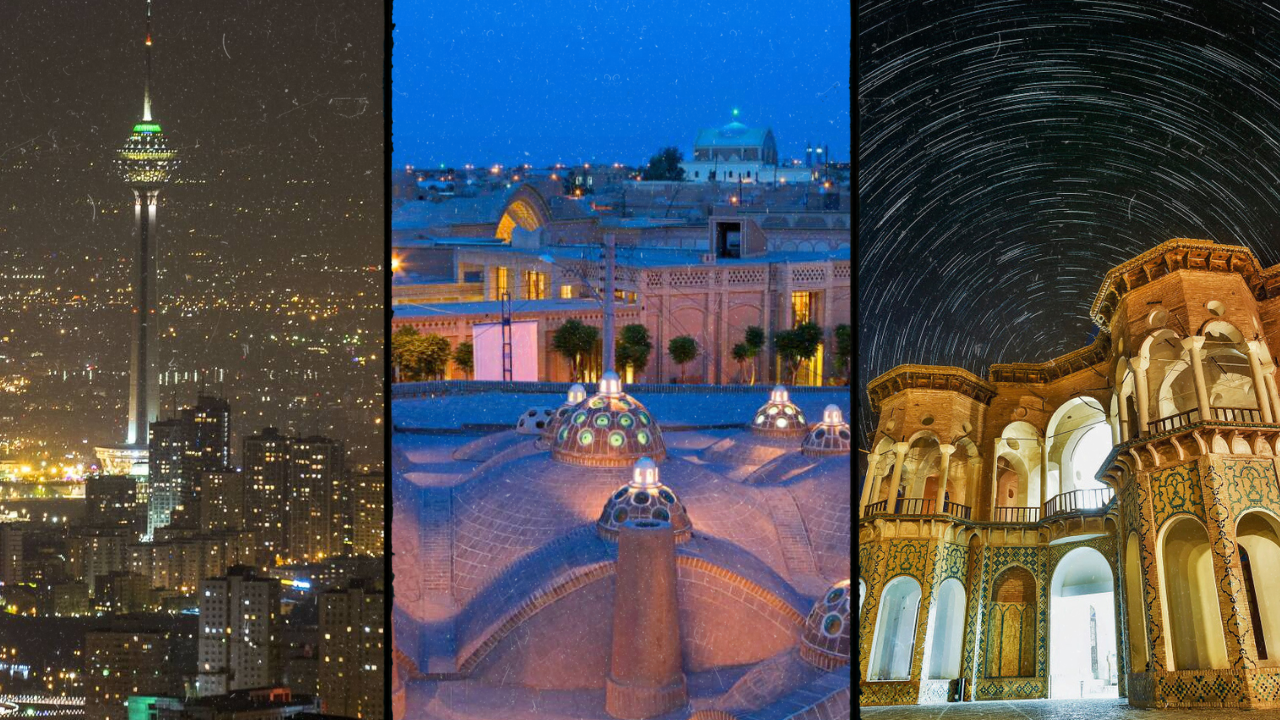
Top 10 Places to Visit in Iran: Explore the Wonders
Places to Visit in Iran
Iran, a country steeped in history, culture, and natural beauty, offers an array of unforgettable experiences for travelers. From ancient ruins that whisper tales of bygone empires to bustling bazaars filled with exquisite crafts, from serene landscapes to architectural marvels, Iran is a land of diversity and contrasts. This blog post will take you through some of the most captivating places to visit in Iran, ensuring you have a well-rounded journey through this magnificent country.
1. Tehran: The Vibrant Capital
Tehran, the dynamic capital of Iran, is where tradition meets modernity. The city is home to several must-visit sites:
- The Golestan Palace: A masterpiece of the Qajar era, featuring stunning gardens, royal buildings, and elaborate decorations.
- The National Jewelry Museum: This museum houses the Imperial Crown Jewels of Iran, one of the world’s largest and most dazzling collections of precious stones and jewelry.
- Tehran Grand Bazaar: A bustling marketplace offering everything from Persian rugs to spices and jewelry. It’s a perfect place to experience the local culture and shop for souvenirs.
- Milad Tower: Offering panoramic views of the city, it’s the sixth-tallest tower in the world.
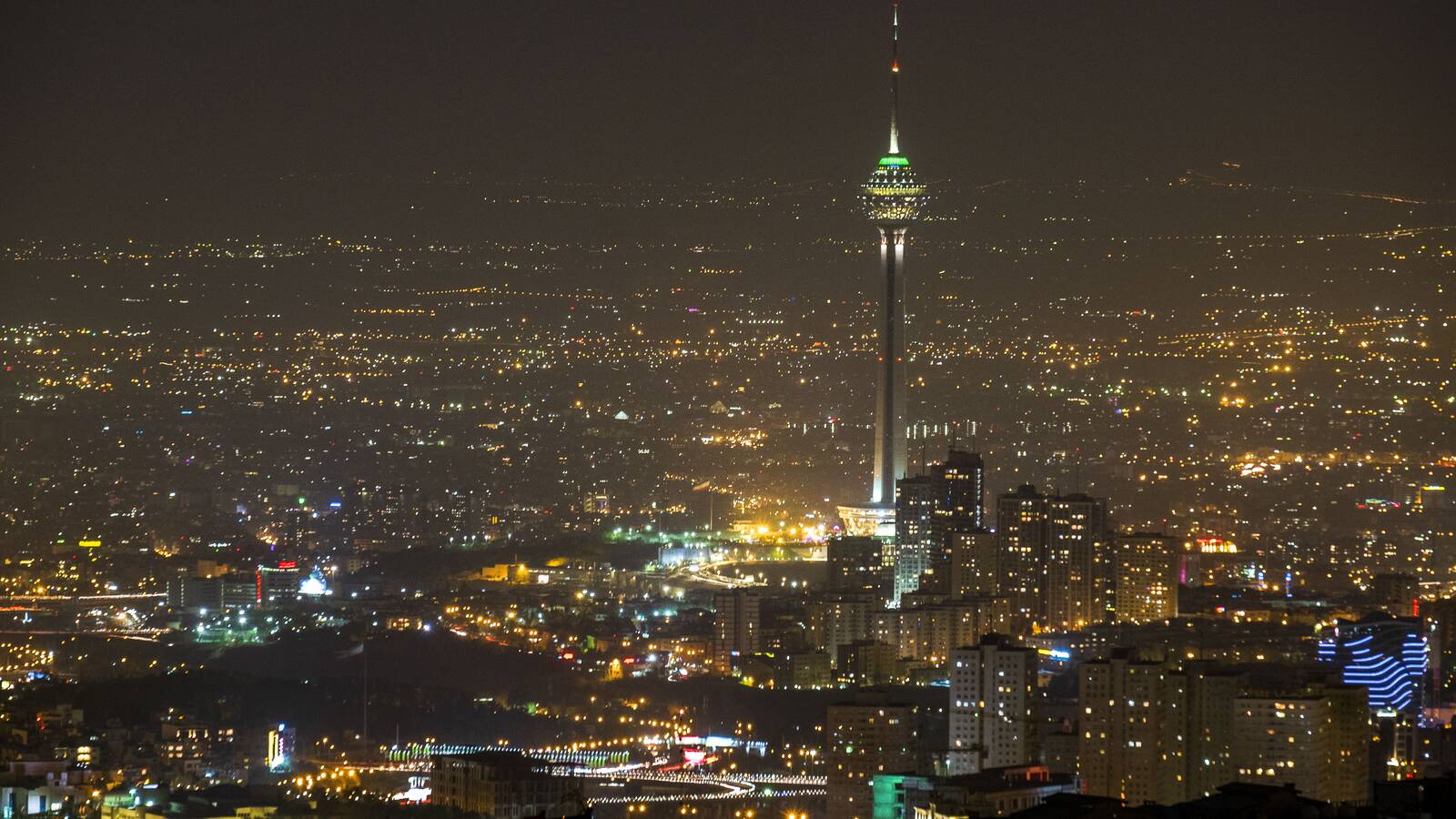
2. Isfahan: The City of Islamic Architecture
Isfahan, known as “Half the World,” boasts impressive Islamic architecture, beautiful boulevards, and stunning bridges:
- Naqsh-e Jahan Square (Imam Square): One of the largest city squares in the world, surrounded by monumental buildings such as the Imam Mosque, Sheikh Lotfollah Mosque, Ali Qapu Palace, and the Isfahan Grand Bazaar.
- Si-o-se-pol and Khaju Bridges: Two of the most famous bridges in Isfahan, best visited at sunset when locals gather to sing and socialize.
- Jameh Mosque of Isfahan: A stunning example of Islamic architecture evolution over 12 centuries. Its beauty makes Jameh a beautiful places to visit in Iran.
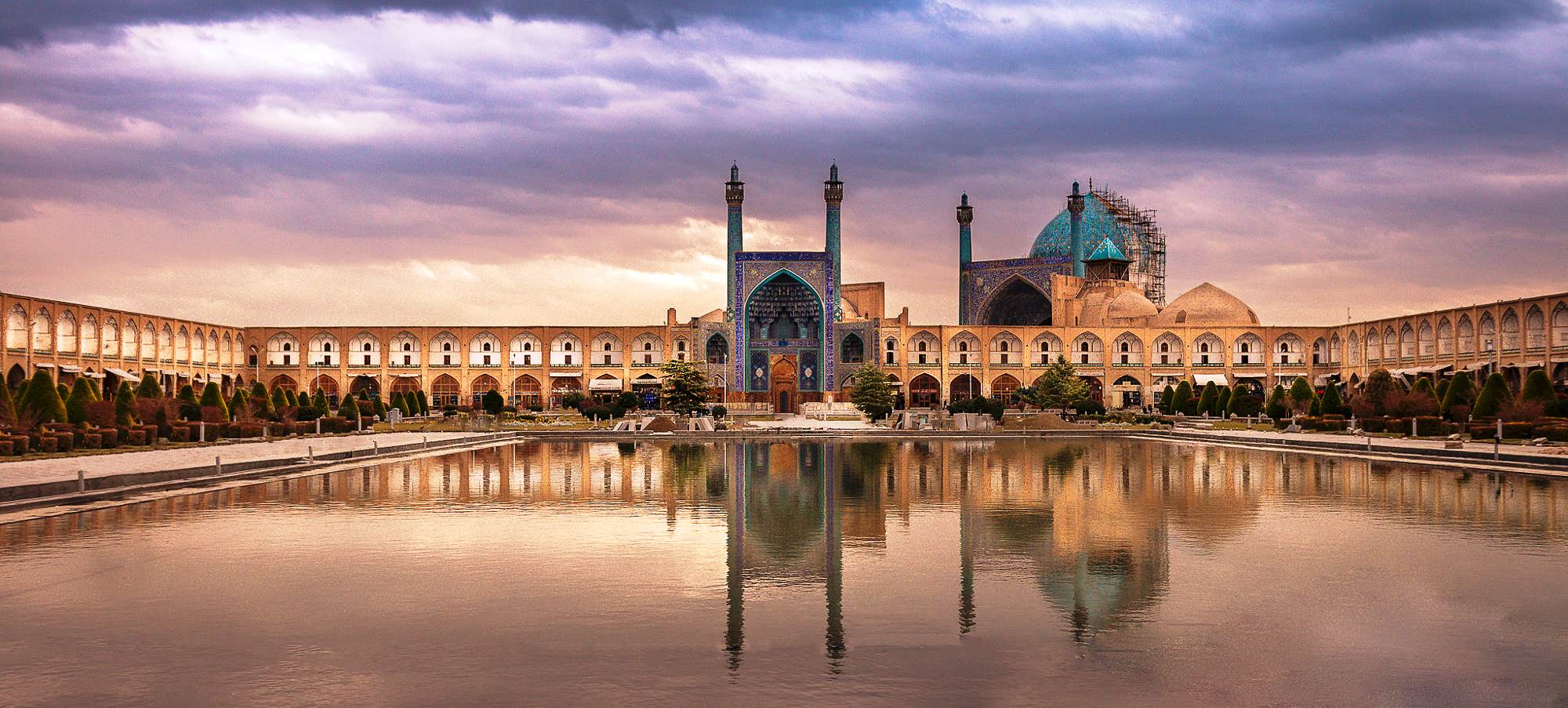
3. Shiraz: The City of Gardens and Poetry, The best places to visit in Iran
Shiraz is synonymous with poetry, gardens, and wine. It is the birthplace of two of the most famous Persian poets, Hafez and Saadi:
- The Tomb of Hafez: A memorial garden dedicated to the poet Hafez, where you can experience the locals reciting his poems.
- Persepolis: Just an hour from Shiraz, the ancient capital of the Achaemenid Empire, Persepolis is a UNESCO World Heritage site, offering a glimpse into the grandeur of ancient Persia.
- Eram Garden: Known for its beautiful flowers, aromatic plants, and impressive buildings, representing the epitome of Persian gardens.
- Nasir ol-Molk Mosque: Famous for its stained glass windows that fill the interior with a kaleidoscope of colors in the morning light.
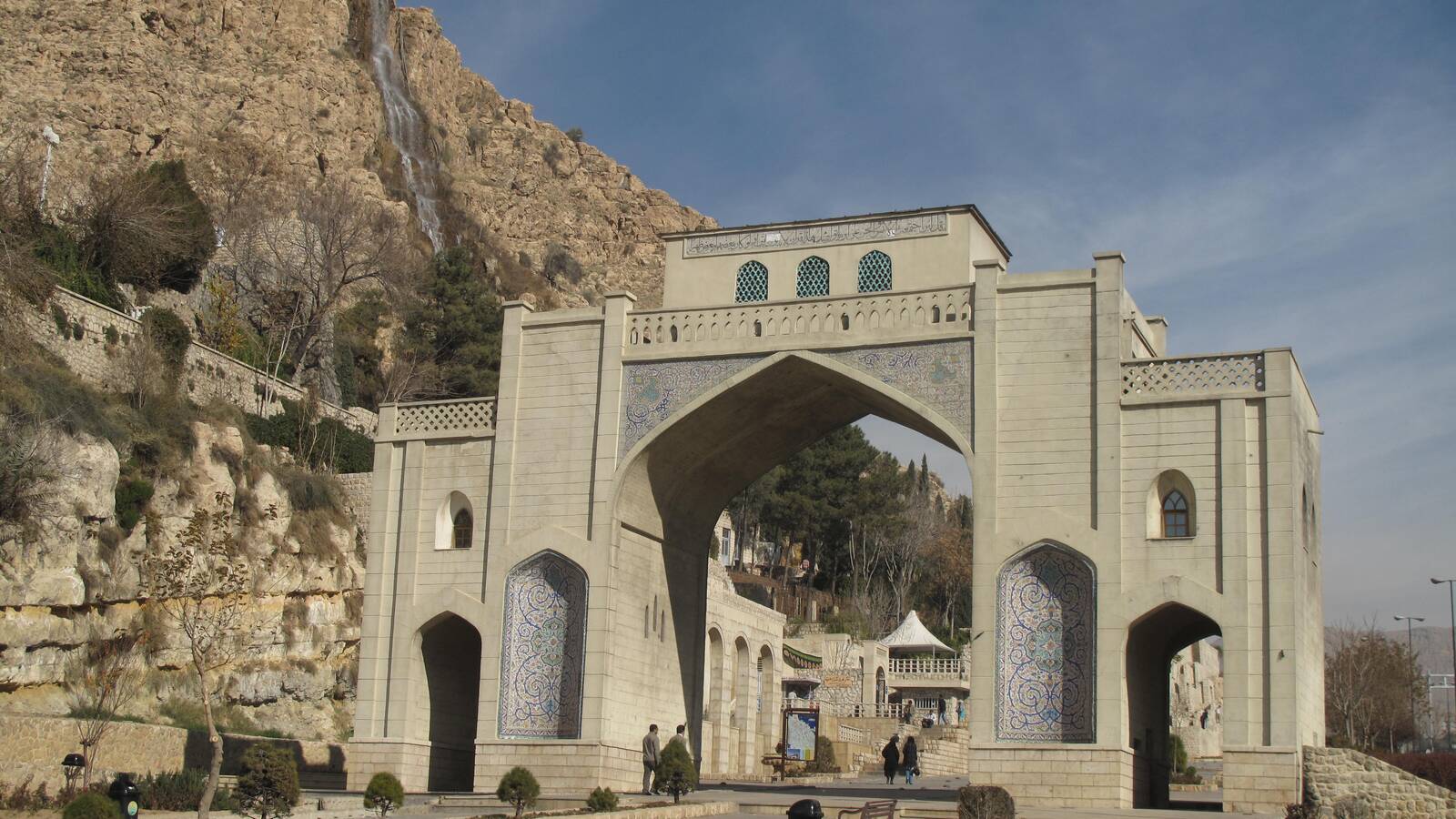
4. Yazd: The Desert Places to visit in Iran
Yazd, the desert city of windcatchers, is a UNESCO World Heritage site known for its unique Persian architecture adapted to desert life:
- The Old Town: A maze of narrow alleyways, ancient buildings, and the highest concentration of windcatchers in Iran.
- Zoroastrian Fire Temple: Home to a flame that has been burning continuously since about 470 AD, symbolizing the city’s ancient Zoroastrian heritage.
- Dowlat Abad Garden: Featuring a tall windcatcher, beautiful orchards, and a traditional Persian architecture.
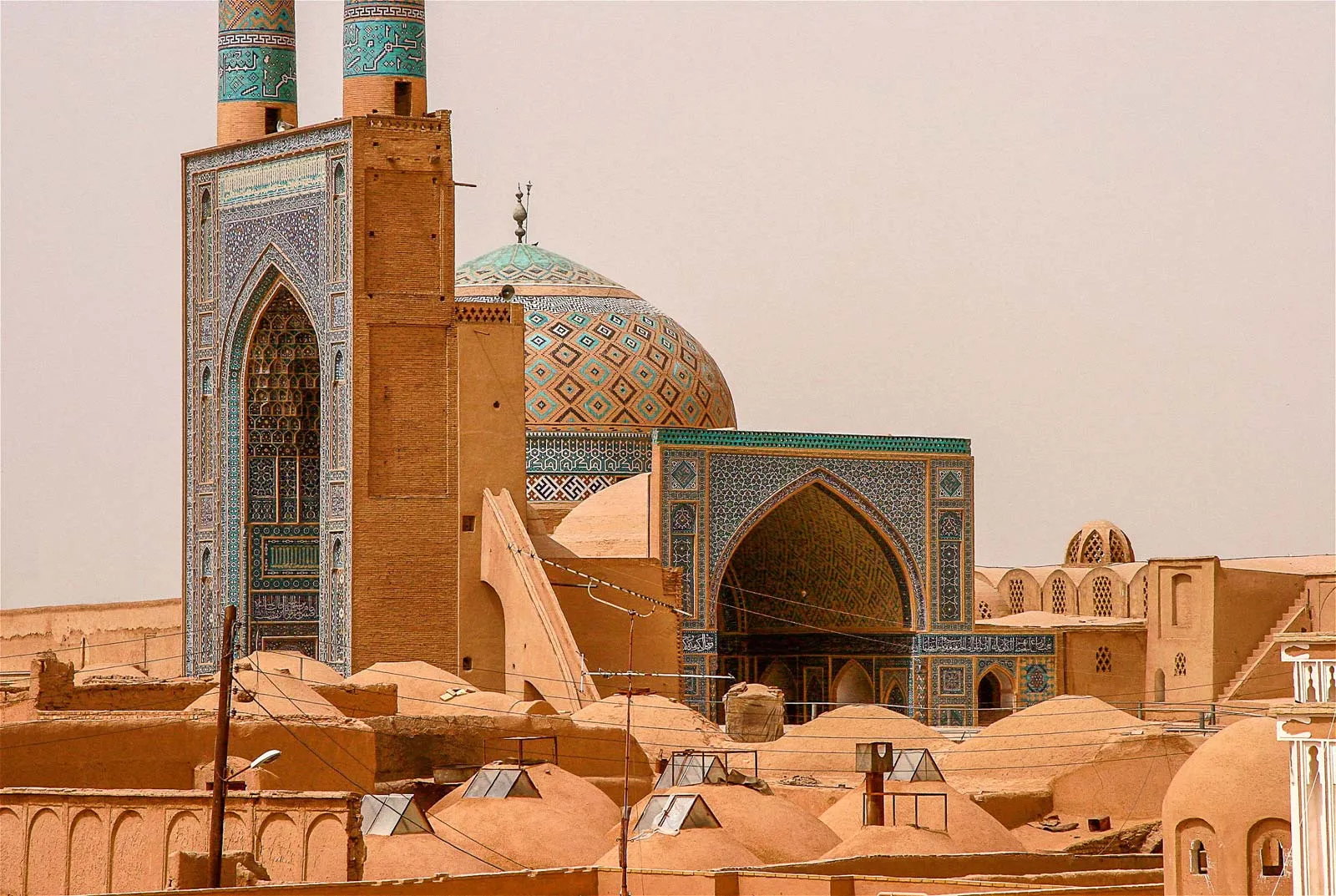
5. Kashan: A Historical Gem
Kashan offers a glimpse into Iran’s rich history with its traditional houses and beautiful gardens:
- Tabatabaei House: A historic house museum showcasing the elegance of traditional Persian residential architecture.
- Fin Garden: A historical Persian garden, reflecting ancient landscaping principles, it’s also known for the tragic story of Amir Kabir’s assassination.
- Agha Bozorg Mosque: Famous for its symmetrical design and stunning dome, it serves as both a mosque and a theological school. This makes Kashan, best places to visit in Iran historically.
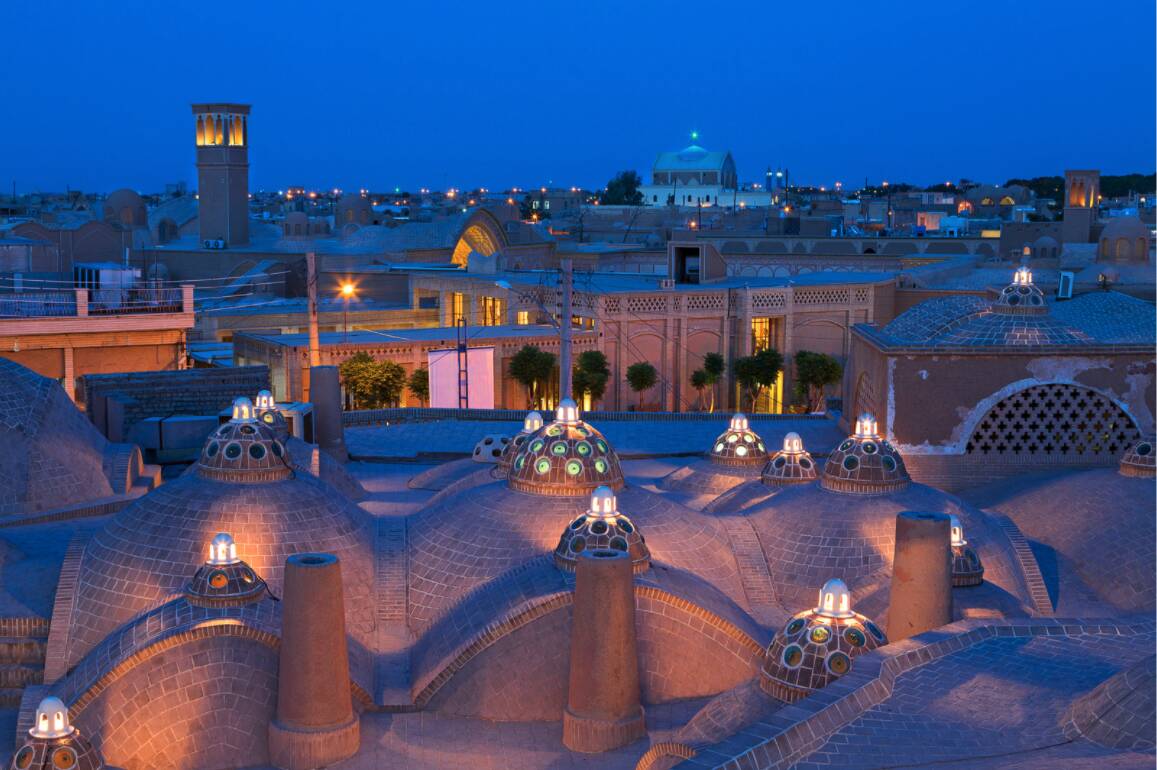
6. Kerman: Gateway to the Desert
Kerman, a city with a strong cultural heritage, serves as a gateway to the Lut Desert, one of the hottest places on earth:
- Ganjali Khan Complex: A 17th-century complex that includes a bathhouse, mosque, bazaar, and caravanserai.
- Shazdeh Garden: Located near Mahan, this historical Persian garden is a green oasis in the midst of the desert.
- Kaluts of the Lut Desert: The desert’s natural formations create breathtaking landscapes, best experienced during sunrise or sunset.
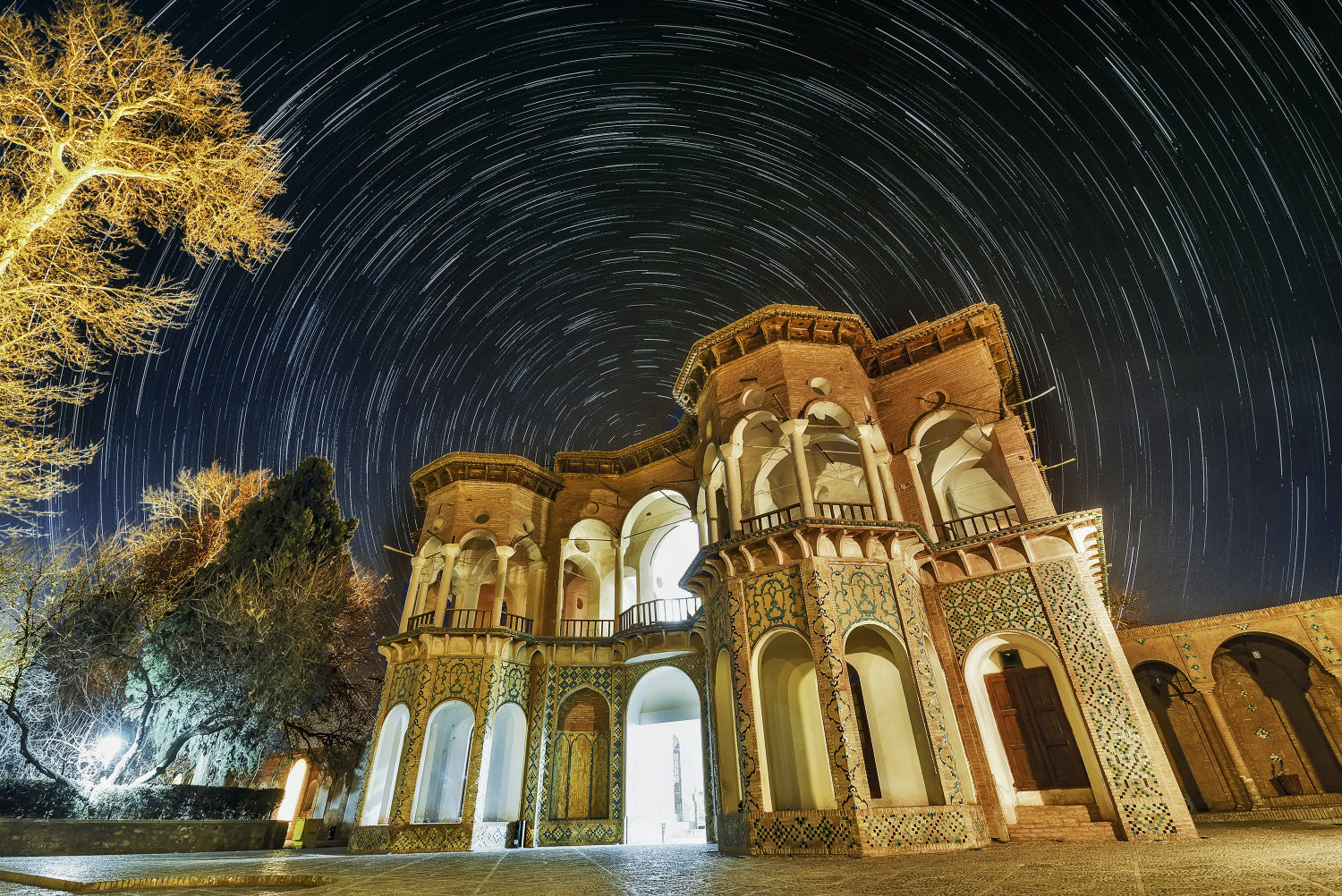
7. Tabriz: The City of Firsts
Tabriz, with its rich history and cultural significance, has been a place of cultural exchange since ancient times:
- Tabriz Historic Bazaar Complex: One of the oldest bazaars in the Middle East and the largest covered bazaar in the world, it’s a UNESCO World Heritage site.
- Blue Mosque: Also known as the Mosque of Exquisite Beauty, it features stunning blue tiles and intricate calligraphy.
- El Goli (Shah Goli): A large historic park with a central lake, surrounded by walking paths and greenery, perfect for an evening stroll.
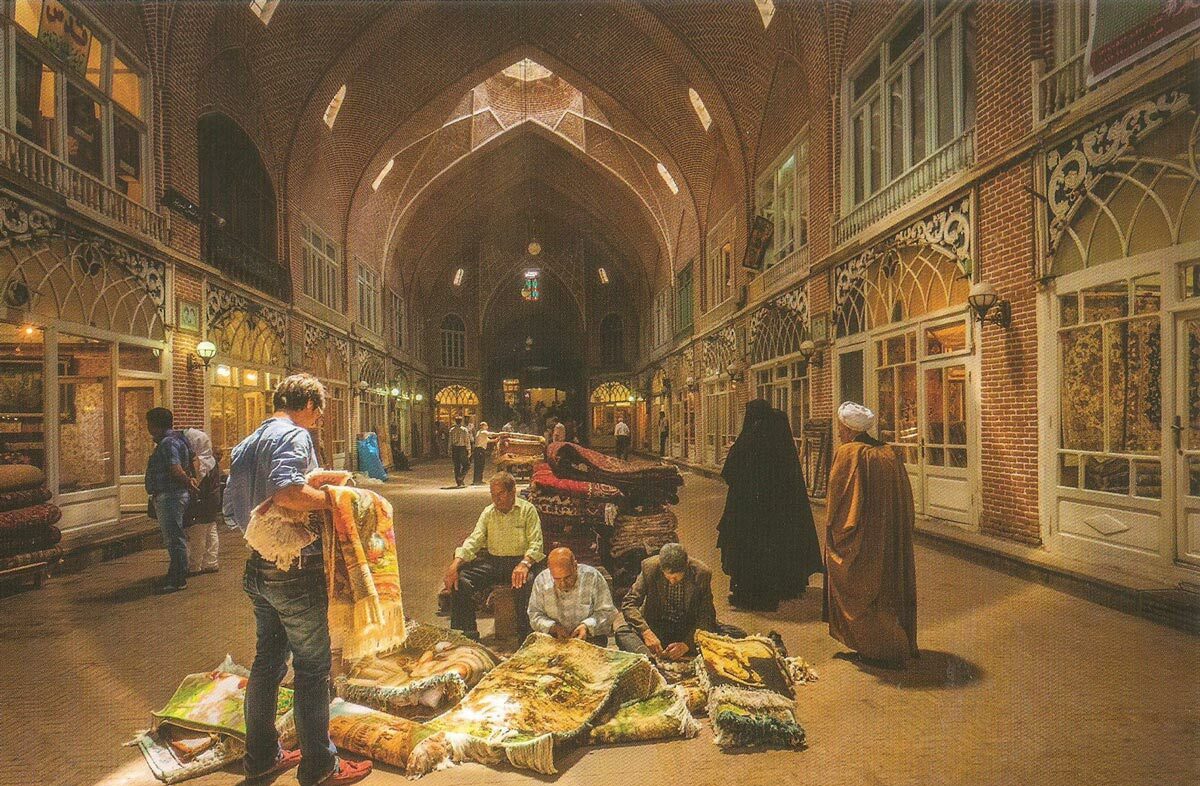
8. Qeshm Island: Nature’s Marvel
Qeshm, the largest island in the Persian Gulf, is famed for its natural wonders:
- Stars Valley: Geological formations created over millions of years, offering an otherworldly landscape.
- Hara Forests: Mangrove forests that are best explored by boat, offering a unique ecosystem with a variety of bird species.
- Chahkooh Canyon: A canyon with striking rock formations and narrow passages, created by erosion.
Read also: Unveiling the Hidden Treasures: Places to Visit in Lakshadweep
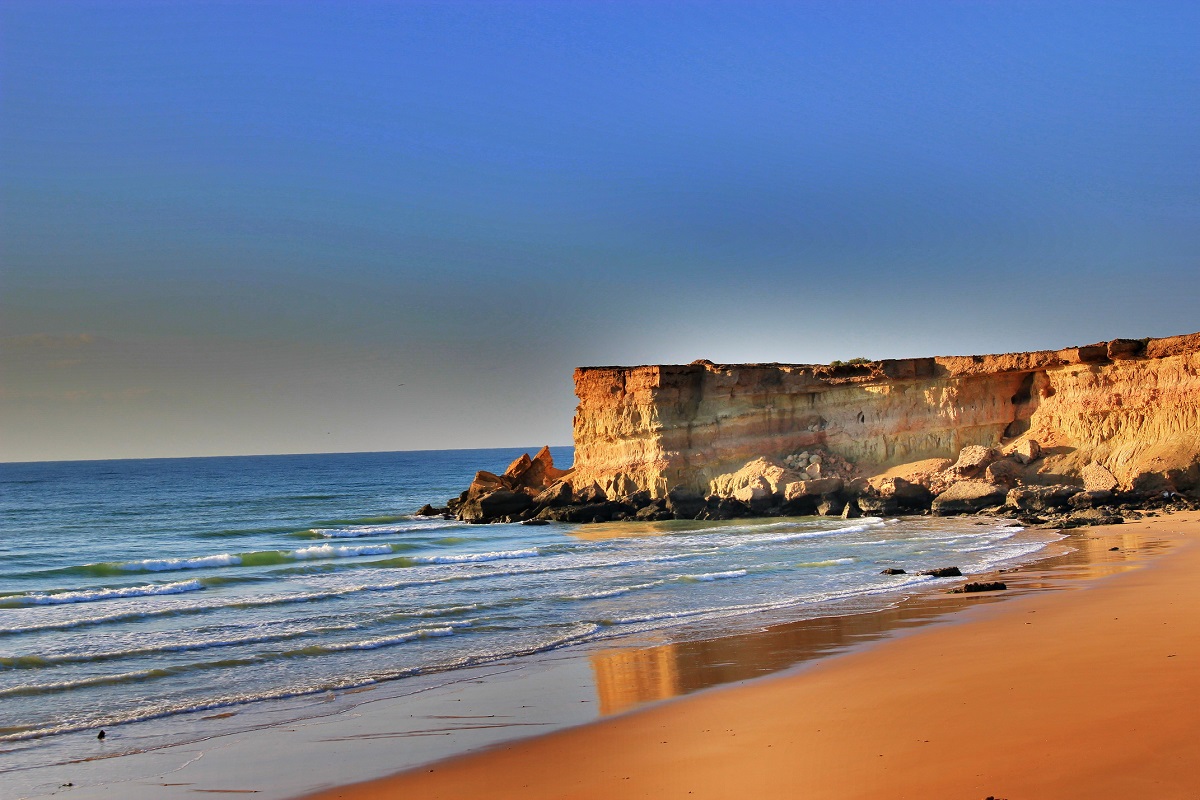
9. Masouleh: The Mountain Village
Nestled in the lush mountains of Gilan province, Masouleh is a stunning example of human adaptation to nature. This historic village is characterized by its terraced architecture, where the roof of one house serves as the courtyard for the one above it. The village’s unique layout, combined with its foggy atmosphere and verdant surroundings, offers visitors a glimpse into a life harmoniously intertwined with nature.
- The Architecture and Atmosphere: Walking through Masouleh, you’ll be captivated by the cobblestone paths, yellow clay houses, and the vibrant bazaars selling handicrafts and local produce. The fog often envelops the village, giving it a mystical feel.
- Hiking and Nature Walks: The surrounding forests and mountains provide ample opportunities for hiking and enjoying the serene beauty of Gilan’s landscape. The region is also known for its tea plantations, adding to the greenery.
- Cultural Experience: Visiting Masouleh offers insight into the traditional lifestyles of northern Iran. The warmth of the local people, combined with the village’s ancient history, makes for an enriching cultural experience.
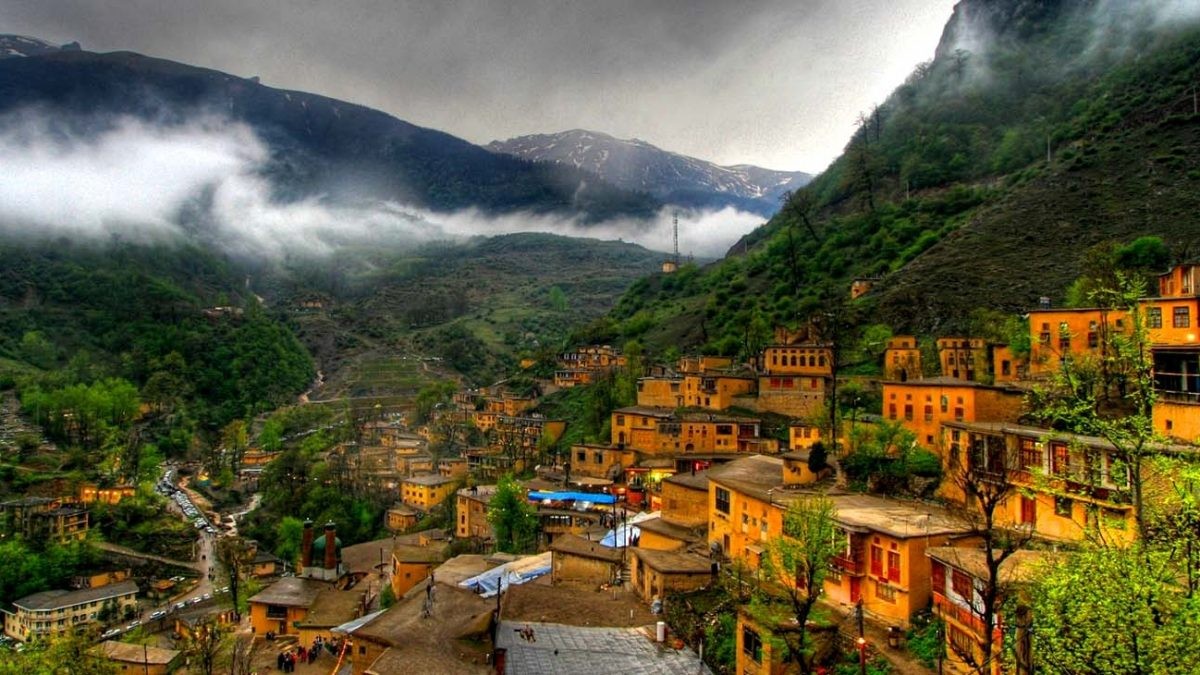
10. Hormuz Island: The Colorful Paradise
Located in the Persian Gulf, Hormuz Island is unlike any other place in Iran. Known as the “Rainbow Island,” it’s famous for its multicolored soils and surreal landscapes. The island’s beauty is not just limited to its beaches but extends to its mountains, valleys, and local art.
- Geological Wonders: Hormuz’s red, yellow, white, and orange soils create a painter’s palette of natural beauty. The Rainbow Valley and the Red Beach are particularly striking, showcasing the island’s vibrant geology.
- Cultural and Artistic Expression: The local community has embraced the island’s unique landscape as a canvas for artistic expression. From painted rocks to murals and installations, art is intertwined with everyday life on Hormuz.
- Eco-friendly Exploration: Visitors can explore the island by bike or on foot, minimizing their environmental footprint while discovering hidden gems like the Salt Goddess Cave and the Valley of Statues. The island’s commitment to sustainability adds to its appeal for eco-conscious travelers.
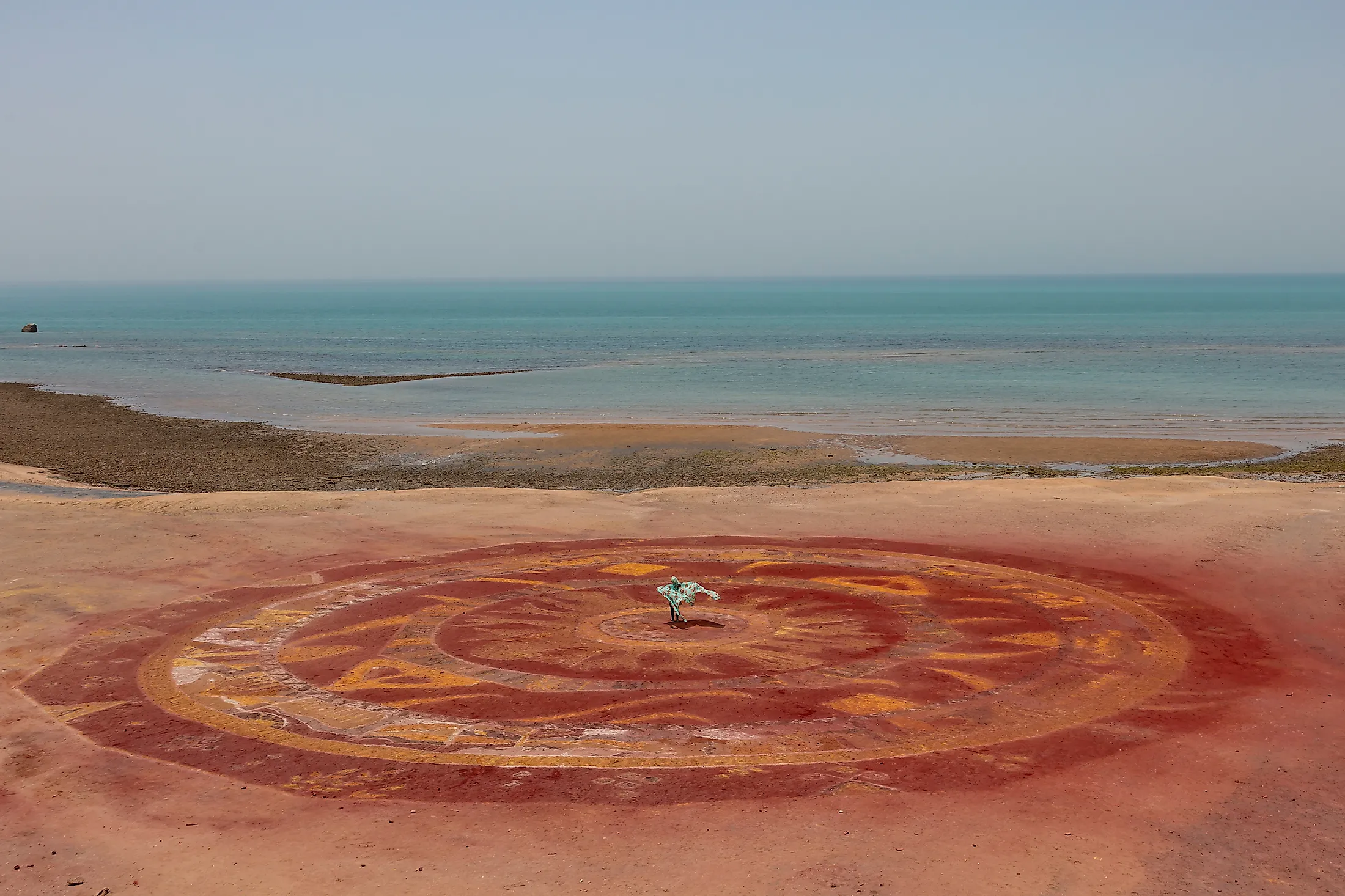
Conclusion
Iran’s vast and varied landscape offers something for every traveler. From the hustle and bustle of Tehran to the serene beauty of the Lut Desert, from the historical depth of Persepolis to the architectural wonders of Isfahan, Iran is a country that defies expectations. Each city and site tells a story of Iran’s rich history, vibrant culture, and the warm hospitality of its people. Whether you’re an avid historian, an architecture enthusiast, a nature lover, or simply someone looking to experience the myriad facets of Persian culture, Iran promises an adventure that is as enriching as it is unforgettable.
FAQs
Q. Is it safe to travel to Iran?
A. Iran is generally safe for travelers, especially when sticking to popular tourist destinations. However, it’s always important to check current travel advisories and respect local customs and regulations.
Q. Do I need a visa to visit Iran?
A. Most visitors will need a visa to enter Iran. The process can vary depending on your nationality, so it’s advisable to check with the nearest Iranian embassy or consulate.
Q. What is the best time to visit Iran?
A. The best time to visit Iran is during the spring (March to May) and autumn (September to November) when the weather is most pleasant.
Q. Can women travel alone in Iran?
A. Yes, women can travel alone in Iran, but they should follow the dress code and local customs for a respectful and hassle-free experience.
Q. What should I wear in Iran?
A. Visitors are expected to dress modestly. Women are required to wear a headscarf and cover their arms and legs, while men should wear long pants and avoid sleeveless shirts.